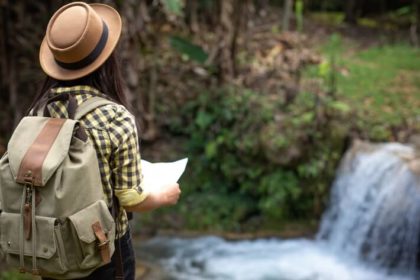Will you be traveling to the isolated and desolate regions of Australia’s dry coasts? The Australian outback is a true national treasure and provides some of the most sought-after sunsets. Every tourist will be in wonder as the sky fills with a combination of crimson and orange hues, shimmering down the desert countryside. When you’re prepared to set out on your Australian adventure, we have a few pointers that will make your journey exciting and safe.
Get your car ready for the drive
It is always best for travelers to avoid taking a car that isn’t working properly. Therefore, you need to be sure your car is capable of handling the task before you start packing. The large portion of the outback presents no problems for a regular automobile. Your regular car will carry you without any issues if you go during the dry season, stick to the main highways, and make a few side detours. Bring the vehicle to a mechanic for an examination and any necessary repairs. Make sure the spare tire is in good condition and that the tires are prepared for the challenge. It is best practice to check the water and oil levels, as well as the tire pressure, before leaving.
Become well-versed in navigation options
It will be essential for first-time outback tourists to navigate. The outback has inconsistent mobile phone reception, so you shouldn’t rely on it too much. Instead of using real-time online maps, download them ahead of time and use them offline. To be safe, think about getting a GPS with satellite navigation. As an alternative, you can rent one from the firm that rents out cars. If you’re traveling outside the main road system, we advise renting a satellite phone.
Remain secure and vigilant
Being ready for the unexpected is another essential outback guideline. The wild is an extremely erratic place. For this reason, you need to plan ahead and acquire the finest insurance possible for both your car and yourself. To ensure that your automobile is protected in the event of an accident, choose the best auto insurance. Your car will be protected, and you’ll feel at ease, regardless of whether you experience a theft, accident, fire, or other natural disaster.
Having an emergency pack is essential
Never travel on a road without an emergency kit that is completely equipped. As previously said, you have to have a spare wheel that has been inspected and is in good working order. Bring a tow rope, jump leads, spanners, screwdrivers, brace, and jack. In addition, a fire extinguisher, tarpaulin, flashlight, batteries, lighters, or matches should be placed in your trunk. All those will be useful should you need to do an urgent repair, even at night. You should also pack a first aid kit, lots of food, and drink to stay hydrated for the duration of your trip.
Take regular pauses
Hours of driving might wear you out more than you might think. Because of this, you should always have a passenger who is completely awake and able to detect any signs of drowsiness in you. Additionally, they may take over and drive while you take a nap. When driving, take a little rest every two hours. It’s time to pull over and take a break if you find yourself yawning every few minutes, reacting more slowly than usual, or swerving or oversteering. Daydreaming, dry and sore eyes, and loss of focus are further warning signs that need to be taken seriously and addressed. A cup of coffee and some leg stretching will help you temporarily, but they can’t replace sleep, so you shouldn’t do them too frequently. When doing a lengthy journey alone, make sure you schedule a good break.
Watch out for cattle and wildlife
In the bush, wildlife and animals are commonplace passengers. Therefore, drive carefully if you’re coming from an urban area of the country where you can only see livestock at the Zoo. They frequently wander onto the road at all hours of the day or night. Use the hours of sunset and sunrise to take in the breathtaking skylines rather than driving through the animal kingdom’s busiest moments. Not only that, but every driver should avoid those periods of decreased visibility. Animals cannot see you if you drive at night, and vice versa. Drive cautiously and only during daylight hours to avoid crashes and accidents.
Concluding remarks
For all adventure enthusiasts out there, a trip to Australia’s outback will be exhilarating and rewarding. When you do decide to take in the breathtaking vistas and enthralling landscape, remember to prioritize your safety and security. To get the most out of your journey, keep an eye out for wildlife, pack sensibly, and maintain safety.





